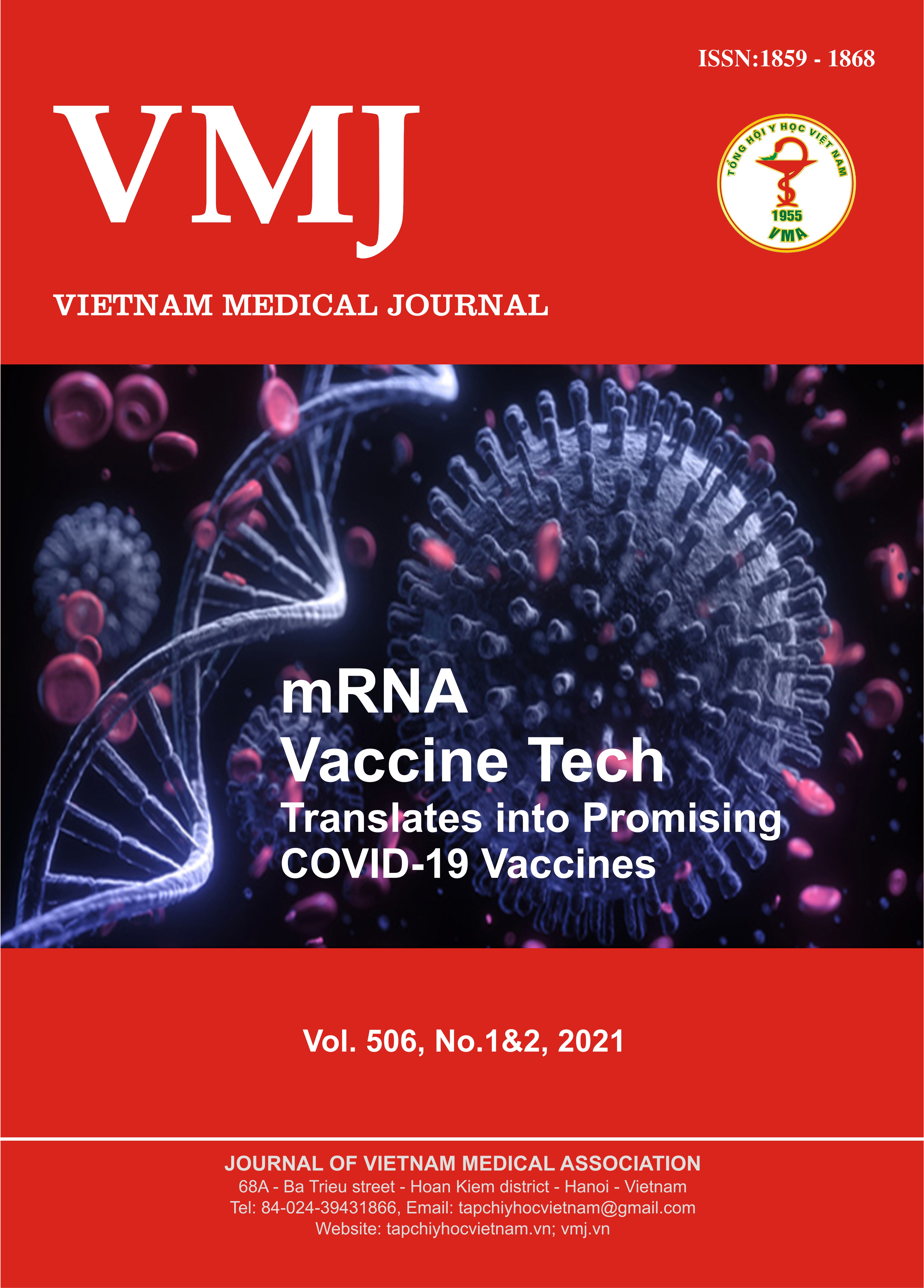CHARACTERISTICS OF WHITE MATTER HYPOINTENSITY IN NORMAL COGNITIVE VIETNAMESE ADULTS USING MRI
Nội dung chính của bài viết
Tóm tắt
Objectives: access the white-matter hypointensity (WMHypo) volume characteristics in relationships with age. Methods: Analysing for volumes of cerebral WMHypo volumes from cranial magnetic resonance images taken from 455 normal cognitive Vietnamese subjects (males 47,03%), and ranging in age from 17 to 87 years. Results: The volumes of WMHypo were increasing with age in both male (p< 0,001) and female (p < 0,001). And regression analyses indicated that WMHypo volume increasing in cubic manners that relatively stable with age under 40-50 y.o then sharply increase from 60s. Conclusion: White matter hypointensity had appeared since youth and boosted from middle age, since any cognitive impairment could be detected as in elders, and and its growth rate coexists with atrophy in the cerebral degeneration process such as Alzheimer and Parkinson diseases.
Chi tiết bài viết
Từ khóa
White-matter lesions, magnetic resonance imaging
Tài liệu tham khảo
2. Wen W, Sachdev PS, Li JJ et al. (2009) White matter hyperintensities in the forties: their prevalence and topography in an epidemiological sample aged 44-48. Human Brain Mapping. 30(4):1155-1167.
3. Gorelick PB, Scuteri A, Black SE, et al. (2011). Vascular contributions to cognitive impairment and dementia: a statement for healthcare professionals from the american heart association/american stroke association. Stroke, 42(9), 2672-2713.
4. Brown WR, Thore CR (2011). Review: Cerebral microvascular pathology in ageing and neurodegeneration. Neuropathology and Applied Neurobiology, 37(1), 56-74.
5. Wei K, Tran T, Chu K, et al. (2019) White matter hypointensities and hyperintensities have equivalent correlations with age and CSF β-amyloid in the nondemented elderly. Brain Behav., 9(12):e01457.
6. W. Wen and P. Sachdev (2004). The topography of white matter hyperintensities on brain MRI in healthy 60- to 64-year-old individuals,” NeuroImage, 22(1):144-154.
7. Olsson E, Klasson N, Berge J, et al. (2013). White Matter Lesion Assessment in Patients with Cognitive Impairment and Healthy Controls: Reliability Comparisons between Visual Rating, a Manual, and an Automatic Volumetrical MRI Method-The Gothenburg MCI Study. J Aging Res., 2013:198471.
8. Dong TQ, Chien NL, Truong DT, et al. (2019) Measuring the corpus callosum and intracranial volumes of vietnamese normal adults using MRI. J Military Pharmaco-Med., 6: 128-134.
9. Dong TQ, Chien NL, Truong DT, et al. (2019) Age, gender and brain and its ventricular volumes on magnetic resonance imaging in vietnamese adults. Vietnam Med J., 483: 60-66.


